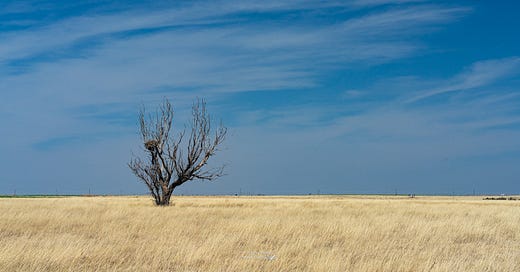Unconscious Territories
A brief introduction to a series of psychological inquiries on the American self and soil.
The “mystery of the American earth,” as Jung called it, could be observed in how the “European races begin to indianize themselves in the second generation of immigrants,” regarding skull and pelvic measurements and unconscious adaptations to the land.
However, it is a question as to whether the chthonic qualities of the American soil are not also subsumed in modern Americans' generational, psychological aspects.
Perhaps the Anglo believes that he has conquered the land upon which he walks; although, it could be said that he suffers most greatly. The “mystery” of the American earth has shifted from what was originally only observed in physical and personal attributes to a deeper psychological phenomenon.
Of course, this is not to say that the newcomers should not have been proud of their remarkable feats of adaptation and domination of the land. Still, the rift between Europeans and New Americans grew wider—both spatially and psychologically, alongside the migration across the West.
The split between ego and Self has metastasized. There is a continuous and ever-growing seeking for ‘spirit’—a symbolic compensation—whether it takes the form of substance abuse, isolation, or psychic detachment. Such are not merely disorders, but calls from the unconscious.
The thread that once tied the Old European to his chthonic roots is now a filament reaching into the abyss of the new, “conquered” land—now industrialized, hyper-virtual, and shallow. Such ties hardly cease to exist, so much as they beckon to be acknowledged and reckoned with.
Ponca tribe chief White Eagle once said, upon being forced to relocate to Oklahoma:
“And so I reached the Warm Land [Oklahoma]. We found the land there was bad and we were dying, one after another… our animals died, and, oh, it was very hot. ‘This land is truly sickly…and we hope the Great Father will take us back [home] again.’”
White Eagle’s lament foretells spiritual contamination. His observation that “this land is truly sickly” speaks not only to environmental and physical suffering but also to a rupture in the psychic and symbolic relationship between people and place. In a Jungian sense, land is more than terrain—it is psycho-spiritual territory.
Modern Oklahoma, one of the most burdened states in terms of drug use, suicide, and generational poverty, may represent the psychological aftershock of this ruptured relationship with place, and not only for the native Indian.
This does not suggest that national identity must remain shackled to historical guilt. However, a nation's blood goes only as deep as its inhabitants, experiences, and spirit. When it is founded upon wounded ground, particular trajectories seem only natural.
What chief White Eagle experienced as a sacred loss has perhaps become a haunting presence for the settler psyche: the chthonic strands of the land twisting for reckoning. Yet, it is hardly achievable as a collective call-to-arms—a worshiped tactic by the masses. Instead, it appears quietly, in the struggles of the individual, as a personal invitation to reconcile the psyche with the soil.




